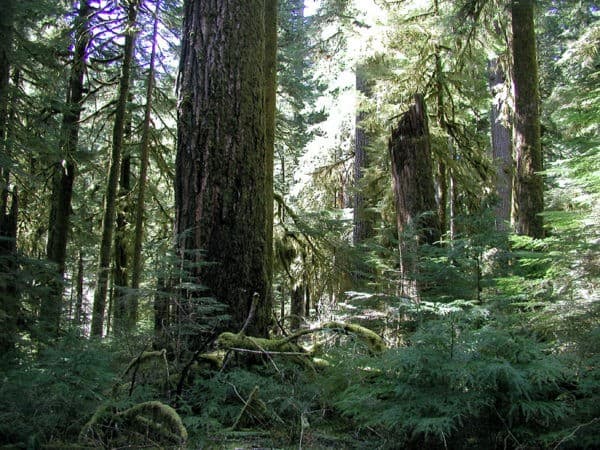New study shows how old growth forests combat climate change

 A new study shows that old-growth forests are better than younger plantation forests at reducing temperatures for the plants and animals living within them, a finding that will prove valuable for forestry management services trying to combat the effects of climate change.
A new study shows that old-growth forests are better than younger plantation forests at reducing temperatures for the plants and animals living within them, a finding that will prove valuable for forestry management services trying to combat the effects of climate change.
“To the untrained eye, plantations might look similar to old-growth forest in terms of the aspects that are well known to influence temperature, particularly canopy cover,” says Matt Betts, co-author of the study and professor at Oregon State University’s College of Forestry. “So, the magnitude of the cooling effect of old-growth structure is somewhat surprising.”
Researchers compared temperature readings under different forest canopies within the Oregon section of the Cascade Mountain Range, extending from southern British Columbia to northern California, and found that old-growth forests reduce maximum spring and summer air temperatures by as much as 2.5 degrees Celsius more than secondary and plantation forests.
Researchers chalk it up to the different characteristics of old-growth forests. Whereas a plantation forest is usually dominated by one tree species often of the same age, an old-growth forest will contain many tree varieties of different ages and will have more biomass.
Old growth forests and climate change: a new study shows that old-growth forests are better than younger plantation forests at reducing temperatures
With an estimated 3.5 million hectares of old-growth forest remaining in the coastal region of the Pacific Northwest -much of it currently under the protection of the U.S. Northwest Forest Plan- the potential of these forests to keep temperatures within a habitable range for forest species is significant.
Hence the need for forest management policies which favour the protection and restoration of old-growth forests, according to the study’s authors. “In jurisdictions where biodiversity maintenance is the goal, conservation and restoration of structures associated with old-growth forests are more likely to sustain favorable microclimates and to reduce climate change impacts on temperature-sensitive species,” say the authors.
Indeed, the capacity of old-growth forests to act as carbon sinks has only been recognized over the past ten years.
The previous assumption was that the older trees -anywhere between 15 and 800 years in age- did not absorb carbon dioxide at the rate of younger trees, and thus, it was thought that old-growth stands were more carbon-neutral, giving off as much carbon dioxide as they absorbed.
But in an analysis conducted in 2008, researchers (again, from Oregon State University) concluded that, worldwide, old-growth forests play a significant role as carbon sinks, taking in upwards of 10 per cent of the planet’s carbon dioxide.
Earlier this year in British Columbia an historic agreement was reached between the provincial government and First Nations groups to protect a section of the Great Bear Rainforest amounting to about 3.1 million hectares of coastal forest land located about 700 kilometres north of Vancouver. The deal marks about 15 per cent of the Great Bear Rainforest for logging and other industrial uses and leaves 85 per cent protected, including a large amount (70 per cent of the total area) of old-growth forest.
The new study appears in the online journal Science Advances.

